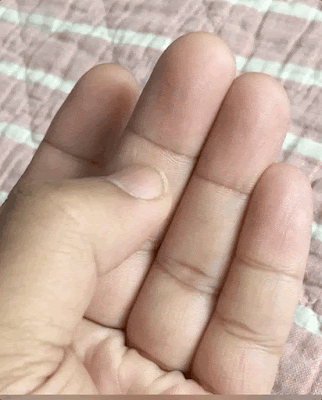Abhivadaye: Lineage in knowledge produced by communities of experts
This is how I count things.
Its weird, I know. I count in base 12. I never gave it much thought before. I was wondering about it this past weekend so I asked my Dad about it during our weekend call. He said it was how Tamil Brahmins are taught to count off their chants. I must have retained it from when I was taught the Sandhyavandanam as a kid.
There is a vedic tradition in some communities in south India- that of the elaborate self-introduction. This is called the abhivadaye (uh-bhee-VAA-da-yay). In it, in addition to your name, parent's name, and class signifiers, you also declare your scholarly clan, and chosen significant texts. I was taught how to introduce myself like this. In the abhivadaye I see the evidence of interactions between social and semantic structures, and how they produce each other. If there's a single antecedent to my interests in this line of inquiry, it is my meditations on the practice of abhivadaye.
Better scholars than me have thought about the relationship between our behavior and the texts we produce, in which we encode our socially produced knowledge. Nor am I the first to observe that knowledge is produced within epistemic communities. But I have a unique epistemological perspective in that I have access to the tools and vocabularies of both biological systematics and the social sciences. And so I want to use this perspective.
I envision sociosystematics as the study of the evolution and inheritance of knowledge socially produced by experts, measured as semantic structure in texts, and its change over time across a longitudinal network of contributors: knowledge creators, collaborators, and curators. Each edge in this network represents a dated coauthored text and is associated with a high dimensional vector representing semantic structure.
This is based on the core assumption that knowledge produced by an epistemic community in a field at a point in time is some function of knowledge produced by that community and related community structure within the field at a previous time, in the form of within- and between-community semantic inheritance.
Even though sociosystematics is a theory most essentially espoused in the language of mathematics, care must always be taken to ensure that verbal description and understanding is central in our conceptual understanding. The phenomenon matters. The mechanism matters. Tacit knowledge, the impossible-to-truly-encode knowledge in the mind of contributors, matters. And so sociosystematics will always require qualitative analysis to be complete. Interviews, non-textual artifacts like videos, music, and sculpture, intentional arrangements of objects in a space, are all important data that are complementary to texts.
In method, I envision the practice of sociosystematics to be much like that of a social networks scholar. The data and many of the analytical tools for engaging with the data and assessing the social structure it represent comes from network theories. You can think of each unit of time, each slice, to be a network of contributors, which can be subject to network analyses.
Between the slices of time plays out the process of semantic inheritance, wherein knowledge in the minds of the contributors evolves as measured as change in semantic structure over a unit of time. I don't exactly know what this inheritance model looks like yet. I have some ideas from a recent re-reading of my old dissertation. I think it will be implemented in a bayesian framework.
Some of the preliminary definitional problems of sociosystematics:
- The data
- Are texts the only form of usable data? What other encoded representations of socially produced knowledge exist?
- What is the best way to measure semantic structure in texts?
- Are all forms of texts equally amenable to sociosystematic analysis?
- What does non-textual evidence tell us about contributors and the texts they produce?
- Is temporal data always necessary?
- Parameters of semantic inheritance
- What exactly is being inherited across generations?
- What is the semantic and temporal unit of inheritance?
- What is a generation?
- What is the causal mechanism of semantic inheritance?
- The inheritance model: What are the inheritance processes for
- Convergence of structure of two communities? With or without collaboration links.
- Divergence of structure of two communities? With or without collaboration links.
- Hybridization of structure in two communities?
- De novo creation?
- Diversification?
- Selection?
- Drift?
- Other
- The network: Who are the contributors and what are the relevant social relationships
- How is the field defined?
- How are communities defined?
- Authors: Who is an author? Someone who writes the text, someone who consulted on the writing?
- Curators: What role do editors play? Eg. Anna Wintour's impact on the semantic structure of texts in the field of fashion. Or the Huggy Rao effect on semantic structure at ASQ.
- Edges: All documents are edges. Are there other types of relevant edges? What about supervisor-student, or classmate? Or are the salient relationships captured in the contributor network?

Comments
Post a Comment